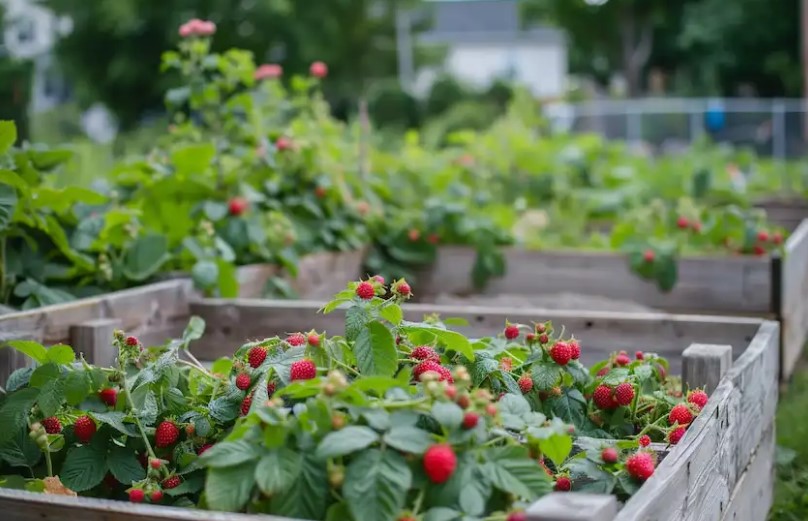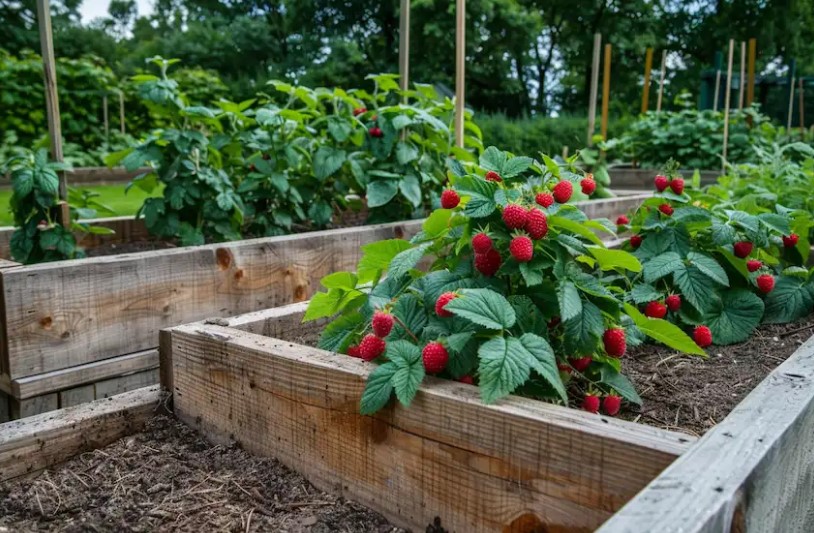Growing raspberries in your garden can be an incredibly rewarding experience, especially when you focus on maximizing the size and sweetness of your harvest. Raised bed gardening offers several advantages for growing giant raspberries, from improved soil conditions to better pest management. Here’s a comprehensive guide on how to cultivate giant raspberries in raised beds, including tips and techniques from seasoned gardeners.

Benefits of Raised Bed Gardening for Raspberries
Raised beds provide excellent drainage, which is crucial for raspberry health as they are susceptible to root rot in waterlogged soil. Additionally, raised beds allow for better air circulation around the plants and easier access for maintenance and harvesting. They also help in keeping the soil warmer, which can extend the growing season.
Choosing the Right Variety
- Variety Selection: To grow giant raspberries, choose varieties known for producing larger fruit, such as ‘Tulameen’, ‘Cascade Delight’, or ‘Brewer’. Check with local nurseries or agricultural extensions for recommendations suited to your climate.
- Zone Considerations: Ensure the raspberry variety you choose is appropriate for your USDA hardiness zone. Raspberries generally thrive in zones 3-9.
Setting Up Your Raised Beds
- Bed Construction: Build or purchase raised beds that are at least 12-18 inches deep and 2-4 feet wide. The length can vary based on your available space, but allowing room for 2-3 plants per bed is a good guideline.
- Soil Preparation: Fill your beds with a mix of high-quality garden soil, well-rotted compost, and aged manure. Raspberries thrive in slightly acidic soil with a pH between 5.5 and 6.5.
- Sunlight: Ensure your raised beds are positioned in a location that receives full sun, which is crucial for fruit production.
Planting and Care
- Planting Time: Plant raspberry canes in early spring as soon as the ground is workable. For warmer climates, fall planting is also viable.
- Spacing: Plant canes about 24 inches apart within the row, with rows spaced about 36 inches apart. This spacing allows ample room for growth and air circulation.
- Watering: Keep the soil consistently moist but not waterlogged. Mulching around the plants with straw or wood chips will help retain moisture and suppress weeds.
- Fertilizing: Apply a balanced fertilizer or a specially formulated berry fertilizer in early spring, and again in midsummer to support vigorous growth and fruiting.
- Pruning: Regular pruning is essential to promote healthy growth. Remove all weak, damaged, or diseased canes. After fruiting, prune out the canes that have produced fruit, leaving the new canes for next year’s crop.
- Support: Raspberries can benefit from trellising, especially as the fruit begins to mature and weigh down the canes.

Tips for Maximizing Fruit Size
- Thinning: Once plants are established, thin the canes to allow only the strongest to grow, reducing competition for nutrients and light.
- Regular Feeding: Use a high-potassium fertilizer during the flowering and fruiting phases to enhance fruit size and taste.
- Pest and Disease Control: Monitor for signs of pests and diseases. Use organic methods to control pests, such as introducing beneficial insects or applying neem oil for common raspberry pests like aphids and spider mites.
- Optimal Watering: During the fruit development stage, ensure the plants are well-watered. Consistent watering is key to developing juicier, larger berries.
Growing giant raspberries in raised beds is not only about enjoying the delicious fruits but also about creating a vibrant and productive garden space. With proper planning, care, and attention to detail, you can achieve impressive results and enjoy a plentiful harvest of giant, sweet raspberries. Happy gardening!










